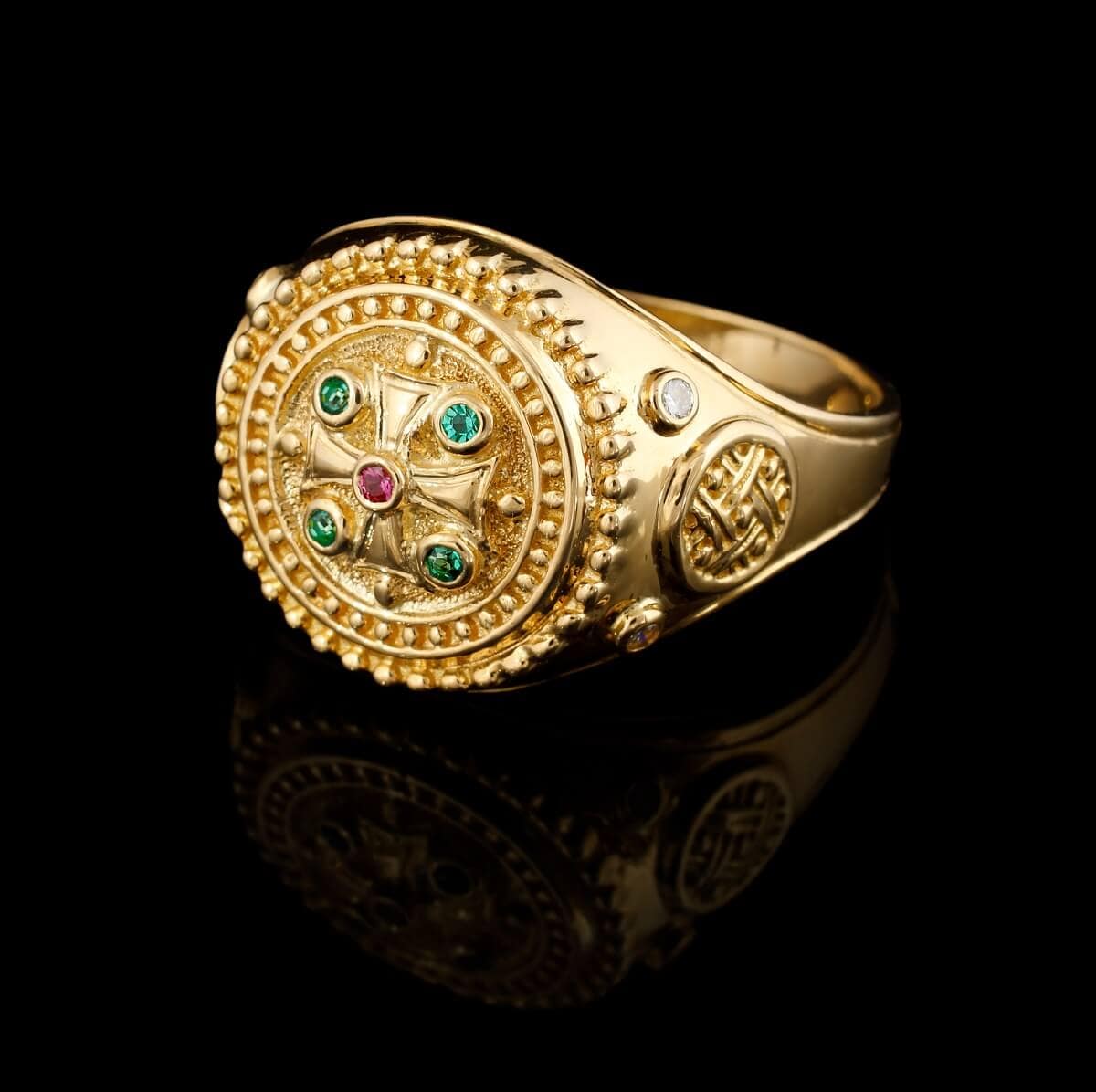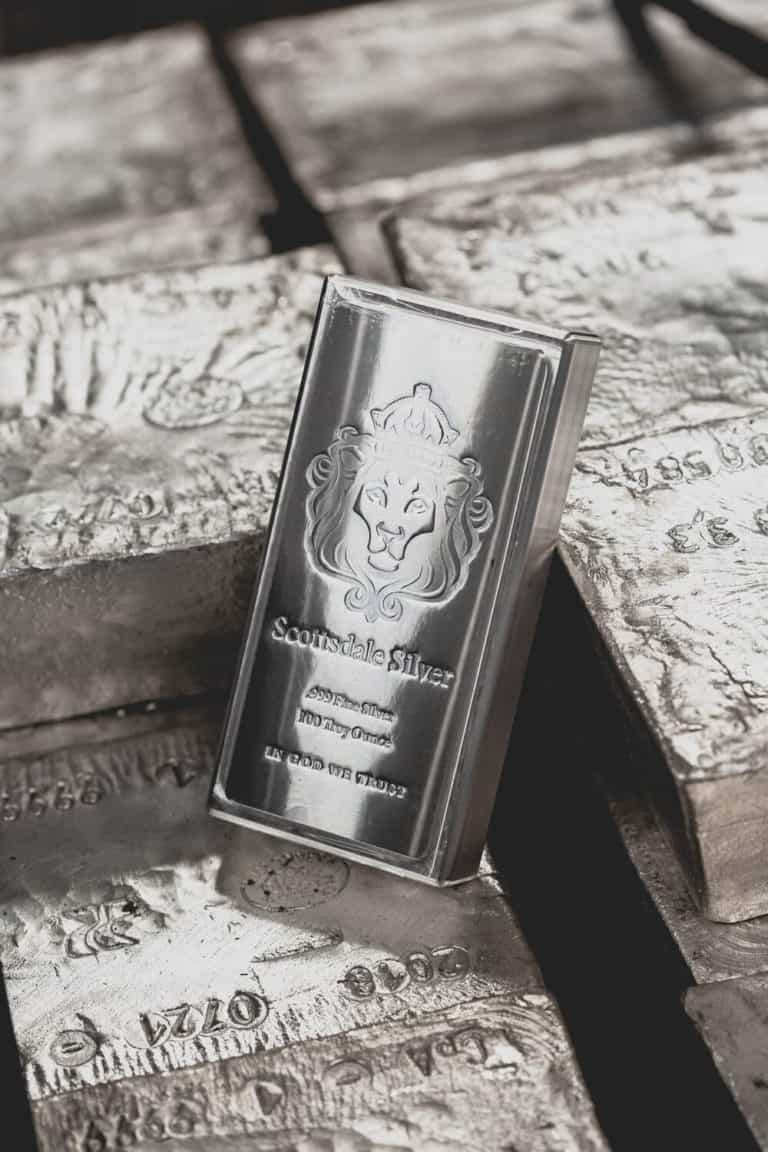- Our content is independently written and reviewed by trusted reviewers & fact-checkers.
- Your information is never sold. We can earn money by connecting you with top Gold IRA Companies. Learn how our reviews work.
- Want to learn more? Meet our authors and explore our editorial policy.

You’ve found a gold piece at a yard sale, or perhaps you’ve inherited a piece of jewelry, and you’re brimming with curiosity – is it the real deal or just a convincing lookalike?
Unfortunately, the world isn’t short on fakes, and more than a few folks have been left disappointed, finding out their treasure was but a gilded trick.
To save you from that heartbreak and disappointment, we’re going to dive into a handy, at-home method to test the authenticity of gold.
No fancy equipment or elaborate set-ups, just something as simple and accessible as toothpaste.
Table of Contents
Why Toothpaste?
This smile polish is used for more than just oral hygiene. It is also used for defogging goggles and mirrors, whitening sneakers, polishing silverware, and, you guessed it – testing gold.
Toothpaste, while gentle on our teeth, is mildly abrasive. Its main task is to remove the food particles and stains that our toothbrush can’t quite reach.
This is thanks to tiny particles that act like very gentle sandpaper. This abrasiveness is precisely why toothpaste can be helpful when testing whether or not an object is gold.
Real gold is a durable but soft metal. In its purest form (24K), it’s actually very malleable and resistant to most acids but can be scratched by other materials.
This is where the ‘less than genuine’ gold steps in. A common way to fake gold items is by using a base metal, often less expensive and more durable, and coating it with a thin layer of real gold.
When toothpaste is applied to a genuine gold item, the mild abrasives in the toothpaste will not cause a color change because they’re not abrasive enough to scratch the gold. The gold remains its original color because the gold itself is not reacting to the toothpaste.
On the other hand, if the item is merely gold-plated, the abrasive components of the toothpaste can wear away the thin gold layer, exposing the base metal underneath.
With that in mind, here’s how to test gold at home with toothpaste.
What you Need
Toothpaste
Ideally, you’ll want plain white toothpaste. Avoid using toothpaste with special additives like crystals, baking soda, or gel formulas, as they could potentially scratch the gold or interfere with the results.
Soft Cloth
You need a soft cloth to clean your gold item before and after the test. It’s important to use a soft material to avoid scratching the gold.
Steps to Test for Gold
Clean Your Gold Item
Clean the gold item you want to test with a soft cloth to remove any dust, dirt, or oils that might interfere with the test.
Apply Toothpaste
Dab a small amount of toothpaste onto the gold item. You can use a cotton swab or your finger to spread it around.
Wait for 1-2 minutes and then wipe the toothpaste off with a soft cloth.
If you see a black color mark on the cloth, then the item is likely not gold. Real gold will not react with the toothpaste, and its color will not change.
Rinse and Dry
Rinse the toothpaste off of the item under running water, then dry it with a clean, soft cloth.
Other At-Home Gold Testing Methods
Remember, while these methods can provide valuable clues about the authenticity of your gold item, they aren’t 100% foolproof.
It’s always best to have any gold you’re unsure about professionally tested, especially if you think it has significant value.
So, in addition to the toothpaste test, here are some other easy, at-home methods you can use to check if your gold is real or just a clever fake.
The Scratch Test
This involves scratching your gold item on a ceramic surface like a plate or tile to see if the gold streak fades. If it does, then your gold is fake.
The Acid Test
This involves using an acid solution like nitric acid to test if your gold is real or not. It’s a bit more complicated than the others, but it’s still relatively easy to do at home.
The Magnet Test
Gold is not a magnetic metal. If your item is drawn to a magnet, it is not made of pure gold. Keep in mind, however, that a lack of attraction doesn’t necessarily mean it’s real gold, as non-magnetic metals can also be used in counterfeit pieces.
The Water Test
Real gold is a dense metal and will sink in water, while many fake gold items will float. However, other dense metals can also sink, so while helpful, this test isn’t foolproof.
The Vinegar Test
Vinegar is an acid, and it can react with some metals. However, pure gold is resistant to most acids. If you place a few drops of white vinegar on your item and it changes color, it may not be real gold.
The Weight Test
Gold is a very dense metal, and for a given size, it should be quite heavy. If your item feels suspiciously lightweight, it may not be real gold. However, this method requires a bit of experience because you need to know how heavy gold should feel.
The Skin Test
Some fake gold items can cause discoloration on your skin when you wear them. If you wear the item for a few hours and it leaves a black or green mark on your skin, it may not be real gold.
The Hallmark Test
Gold items often have a small stamp indicating their karat value (like 10K, 14K, 18K, etc.). However, while the absence of a hallmark might mean it’s a fake, scammers can also fake these marks, so it’s not a definitive sign.
In Conclusion
Toothpaste, an everyday household item, can be a surprising but effective tool for testing the authenticity of gold at home.
Its mild abrasiveness, while insufficient to mar the surface of real gold, can wear away the thin gold coating on fake items, revealing the base metal underneath.
This method is simple, non-invasive, and does not require any specialized equipment. Nevertheless, it’s important to remember that no single at-home gold test can provide absolute certainty.
To confirm the authenticity of your gold piece, it’s advisable to conduct several different tests.
Article Sources
At Gold IRA Blueprint, we dive deep into the world of gold IRAs, using trusted sources to back up our insights. Our sources range from official documents to expert interviews, ensuring our content is both accurate and reliable. We also draw on research from reputable publishers to give you the most comprehensive understanding possible. Check out our editorial policy to see how we maintain our high standards for accuracy and fairness. Also make sure to check out our Financial Review Process to have a better understanding of our process.
Gold Function. (2023). How to Test Gold at Home with Toothpaste: Simple DIY Method. https://www.goldfunction.com/how-to-test-gold-at-home-with-toothpaste/
Bullion Exchanges. (2023). How Do I Test Gold at Home. https://bullionexchanges.com/blog/how-do-i-test-gold-at-home/














